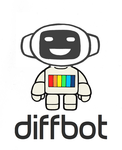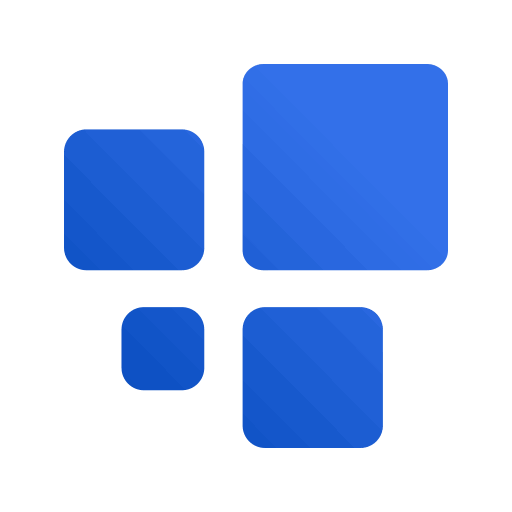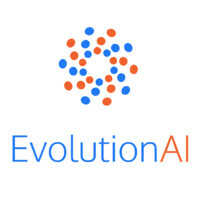Description

Diffbot

DataGrab

Evolution AI
Comprehensive Overview: Diffbot vs DataGrab vs Evolution AI
Diffbot
a) Primary Functions and Target Markets
Diffbot is an AI-powered data extraction and web crawling platform designed to automatically extract data from any web page. The primary functions include:
- Automatic data extraction and structuring using computer vision and machine learning.
- Web crawling for acquiring large-scale web data.
- Knowledge Graph: An extensive database of entities and relationships mined from the web.
Target Markets: Diffbot primarily serves businesses in need of web data for various applications, including SEO professionals, digital marketers, e-commerce businesses, data scientists, and researchers focusing on natural language processing and machine learning.
b) Market Share and User Base
Diffbot is a major player in the web data extraction and knowledge graph arena, though specific market share figures are not generally disclosed. The product is used by tech companies, marketing organizations, and academic institutions, giving it a significant user base but not as broad as some enterprise solutions like those offered by Google or Microsoft.
c) Key Differentiating Factors
- Automation and AI: Diffbot's automated machine learning approach distinguishes it from more manual data extraction tools.
- Knowledge Graph: Provides a comprehensive and dynamic picture of the web's information landscape.
- Scalability: Efficiently handles massive amounts of data, making it suitable for enterprise-level operations.
DataGrab
a) Primary Functions and Target Markets
DataGrab provides tools and services for web data extraction, comparable to web scraping, but often more tailored to specific needs like lead generation, competitor analysis, and pricing strategies.
Target Markets: DataGrab serves small to medium enterprises (SMEs), particularly those in e-commerce, service providers, and digital marketing agencies that require custom data solutions.
b) Market Share and User Base
DataGrab holds a smaller niche market compared to Diffbot, more concentrated around smaller businesses looking for tailored services without investing in in-house capabilities. The user base is likely narrower and more niche-focused.
c) Key Differentiating Factors
- Customization: More focused on providing customized scraping solutions per individual client needs.
- Cost-Effectiveness: Likely offers more affordable rates for smaller businesses compared to solutions like Diffbot.
- Ease of Use: Less complex setup for businesses without a dedicated data science team.
Evolution AI
a) Primary Functions and Target Markets
Evolution AI specializes in document processing, natural language processing (NLP), and machine learning solutions to automate data extraction and interpretation from complex document types like contracts and invoices.
Target Markets: Evolution AI targets financial services, legal sectors, healthcare, and large organizations requiring advanced document processing and analysis capabilities.
b) Market Share and User Base
Similar to DataGrab, Evolution AI operates within a niche market, particularly among businesses that need sophisticated document processing and data extraction services. While specifics on market share are limited, its clientele tends toward enterprise-level companies in highly regulated sectors.
c) Key Differentiating Factors
- Advanced NLP: Offers superior NLP capabilities tailored to document-rich industries.
- Integration: Seamlessly integrates with existing enterprise systems to enhance document processing workflows.
- Industry Focus: Tailored offerings for industries with complex document handling requirements like finance and healthcare.
Comparative Summary
- Diffbot excels in web-wide data extraction and structuring, providing comprehensive data resources through its knowledge graph. It caters to large-scale needs and is highly automated.
- DataGrab focuses on SME-customized web scraping solutions, offering more personal service and lower cost barriers to entry.
- Evolution AI targets the document processing needs of regulated industries, utilizing advanced NLP for automation in complex environments.
Each company provides distinct solutions catering to different aspects of data extraction and analysis, with varying degrees of specialization and market reach.
Contact Info

Year founded :
2011
+1 855-885-4800
Not Available
United States
http://www.linkedin.com/company/diffbot

Year founded :
2020
Not Available
Not Available
Romania
http://www.linkedin.com/company/datagrab

Year founded :
2015
+44 20 7041 7121
Not Available
United Kingdom
http://www.linkedin.com/company/evolution-ai
Feature Similarity Breakdown: Diffbot, DataGrab, Evolution AI
To provide a feature similarity breakdown for Diffbot, DataGrab, and Evolution AI, let's explore their core features, compare their user interfaces, and identify any unique features each product may have.
a) Core Features in Common
-
Web Data Extraction:
- Diffbot: Offers structured data extraction from the web through AI-based tools.
- DataGrab: Allows users to scrape and extract data from web pages.
- Evolution AI: Provides data extraction services, often focusing on document and web data extraction.
-
Automation:
- All three tools offer automation features for data extraction to minimize manual data entry and collection.
-
API Access:
- Each service provides an API that enables programmatic access to extract data, which can be integrated into other applications or systems.
-
AI and Machine Learning:
- Diffbot has advanced machine learning models for parsing web pages.
- DataGrab and Evolution AI use machine learning to improve data capture accuracy.
-
Scalability:
- They are designed to handle large volumes of data, making them suitable for both individual developers and enterprises.
b) User Interface Comparison
-
Diffbot:
- Focuses more on API usage, so the interface is more oriented towards developers and companies looking for programmatic access rather than UI interactions.
- Offers a dashboard for users to manage API keys and view usage but relies heavily on API documentation.
-
DataGrab:
- Typically provides a more straightforward user interface for setting up data extraction tasks with minimal coding knowledge required.
- Often includes visual elements for defining what data to extract, providing ease of use for non-developers.
-
Evolution AI:
- Can offer complex UI elements given its focus on complex document processing; however, it tends to have a more developer-oriented interface with options to configure data extraction processes.
- Includes features for data review and correction, improving data accuracy post-extraction.
c) Unique Features
-
Diffbot:
- Unique in its "Knowledge Graph," which uses AI to connect extracted data into a large interconnected database, providing a richer set of information.
- Offers various "APIs" for specific tasks, like Article API, Product API, and more, each specialized for different types of data extraction.
-
DataGrab:
- May offer user-friendly plugins or browser extensions to facilitate ease of use in setting up scraping tasks without needing extensive coding knowledge.
- Sometimes offers pre-configured templates to assist in frequently encountered use cases.
-
Evolution AI:
- Known for its document-oriented data extraction, capable of handling more complex document formats like invoices, contracts, and other structured or semi-structured documents.
- Often includes advanced data cleaning and validation features post-extraction, aiming to ensure data accuracy and integrity.
In summary, while all three services offer web data extraction with automation and API access, Diffbot stands out with its Knowledge Graph, DataGrab with user-friendly setup, and Evolution AI with advanced document processing capabilities.
Features

Not Available

Not Available

Not Available
Best Fit Use Cases: Diffbot, DataGrab, Evolution AI
When considering Diffbot, DataGrab, and Evolution AI, it's important to understand their key strengths and tailor them to appropriate use cases:
a) Diffbot
Best Fit Use Cases:
- Knowledge Graph Construction: Diffbot is excellent for businesses needing to construct large-scale knowledge graphs using data scraped from the web. Its automated data extraction capabilities are suitable for creating structured datasets from unstructured web data.
- Market Research & Competitive Analysis: Companies conducting extensive market research or competitive analysis can benefit from Diffbot’s ability to extract and monitor data on competitors, products, and market trends.
- Content Aggregation & Curation: Media companies and platforms that require content aggregation from various sources can use Diffbot to automate the content curation process.
- Academic & Research Institutions: These institutions can use Diffbot for gathering datasets from online resources to fuel research projects and data analysis.
Industry and Company Size:
- Enterprises across e-commerce, technology, academic research, and media industries can harness its capabilities.
- Suitable for both startups needing targeted data and large corporations requiring comprehensive data integration.
b) DataGrab
Best Fit Use Cases:
- Simple Data Extraction Needs: DataGrab’s functionality is typically aimed at businesses needing straightforward web data scraping without complex configurations.
- Budget-Constrained Projects: It’s ideal for smaller businesses or startups who need affordable data extraction solutions for specific projects.
- Ad Hoc Data Collection: Companies requiring temporary data extraction for short-term projects might find DataGrab’s on-demand service appeal.
Industry and Company Size:
- Suitable for small to mid-sized businesses across various sectors like retail, marketing, or local services needing quick data access.
- Typically for firms that have less frequent data scraping needs and lower budgets.
c) Evolution AI
Best Fit Use Cases:
- Document Processing & Text Analysis: Evolution AI shines with businesses that need advanced document processing, such as extracting and analyzing information from PDFs, contracts, or other complex text documents.
- Natural Language Processing (NLP) Projects: Businesses focused on NLP applications will gain from Evolution AI’s machine learning models that enhance text comprehension and sentiment analysis tasks.
- Financial Services: Fintech companies can use Evolution AI for automated data entry and processing of financial documents and statements.
Industry and Company Size:
- Particularly advantageous for mid to large-sized enterprises operating in finance, legal, healthcare, and any industry where document automation and text analysis provide efficiency gains.
- Ideal for firms focused on innovation in data extraction and processing through AI and machine learning initiatives.
d) Catering to Different Industry Verticals and Company Sizes
- Diffbot is versatile across multiple industries, providing vast data scraping abilities suitable for both small and large businesses, particularly those focused on large-scale data needs and integration into other systems.
- DataGrab caters predominantly to smaller enterprises and startups, providing cost-effective and user-friendly solutions for simpler and less frequent data scraping scenarios.
- Evolution AI targets industries heavily reliant on document processing and text analysis, offering advanced AI-based tools for companies ready to invest in sophisticated NLP technologies for organizational transformation.
Overall, the choice among these tools should be based on specific project requirements, industry demands, and company size. Each tool has unique capabilities that align with different use cases, ensuring that businesses can select the best fit for their particular needs.
Pricing

Pricing Not Available

Pricing Not Available

Pricing Not Available
Metrics History
Metrics History
Comparing teamSize across companies
Conclusion & Final Verdict: Diffbot vs DataGrab vs Evolution AI
Conclusion and Final Verdict
Considering All Factors: Which Product Offers the Best Overall Value?
Determining the best overall value among Diffbot, DataGrab, and Evolution AI depends on specific use case requirements, as each product excels in different aspects of data extraction and processing. However, broadly speaking:
-
Diffbot offers the best overall value for organizations that need comprehensive web data extraction with minimal effort and maximum automation. Its sophisticated AI for dynamic content extraction and broad coverage of web entities make it highly suitable for large-scale web-scraping and knowledge graph applications.
-
DataGrab is ideal for users focused on simplicity and cost-effectiveness. It provides a straightforward interface for data extraction and is best suited for individual users or small businesses that need to gather data without extensive customization or powerful AI features.
-
Evolution AI is well-suited for enterprises that require high accuracy in text extraction and advanced document processing capabilities, especially in industries like finance and legal services where precision is critical.
Pros and Cons of Choosing Each Product:
-
Diffbot
- Pros:
- Highly automated, reducing the need for manual intervention.
- Capable of extracting data from diverse web sources, including dynamic and complex websites.
- Provides structured knowledge graphs and entity recognition.
- Scalable and can handle large volumes of data.
- Cons:
- Higher cost, which may not be feasible for small businesses or individual users.
- May require some learning curve to fully utilize its advanced features.
- Pros:
-
DataGrab
- Pros:
- User-friendly with an intuitive interface.
- Cost-effective, making it accessible for smaller operations.
- Quick setup with minimal configuration.
- Cons:
- Limited in terms of advanced AI capabilities and customization.
- Not suitable for extracting complex or dynamic data from a large number of sources.
- Pros:
-
Evolution AI
- Pros:
- Excellent for extracting complex data from unstructured documents.
- Highly accurate in text extraction, suitable for industries requiring precision.
- Strong support for processing various document formats.
- Cons:
- May require significant setup and training to achieve desired results.
- Pricing could be prohibitive for small teams or simple use cases.
- Pros:
Specific Recommendations for Users Trying to Decide:
-
If your primary need is web data extraction on a large scale with minimal hassle, especially from dynamic and complex sources, Diffbot is the recommended choice, provided budget constraints are not an issue.
-
If simplicity and cost are your main priorities, and your data extraction needs are not overly complex, DataGrab offers a straightforward solution that is easy to implement and manage.
-
If your focus is on high-accuracy document processing and extracting intricate data from industry-specific documents, Evolution AI would be the best fit, especially if you operate in sectors like legal, financial, or any area where document fidelity is crucial.
Overall, the decision should be guided by specific project needs, budgetary constraints, and the technical resources available to support the implementation and utilization of these technologies.